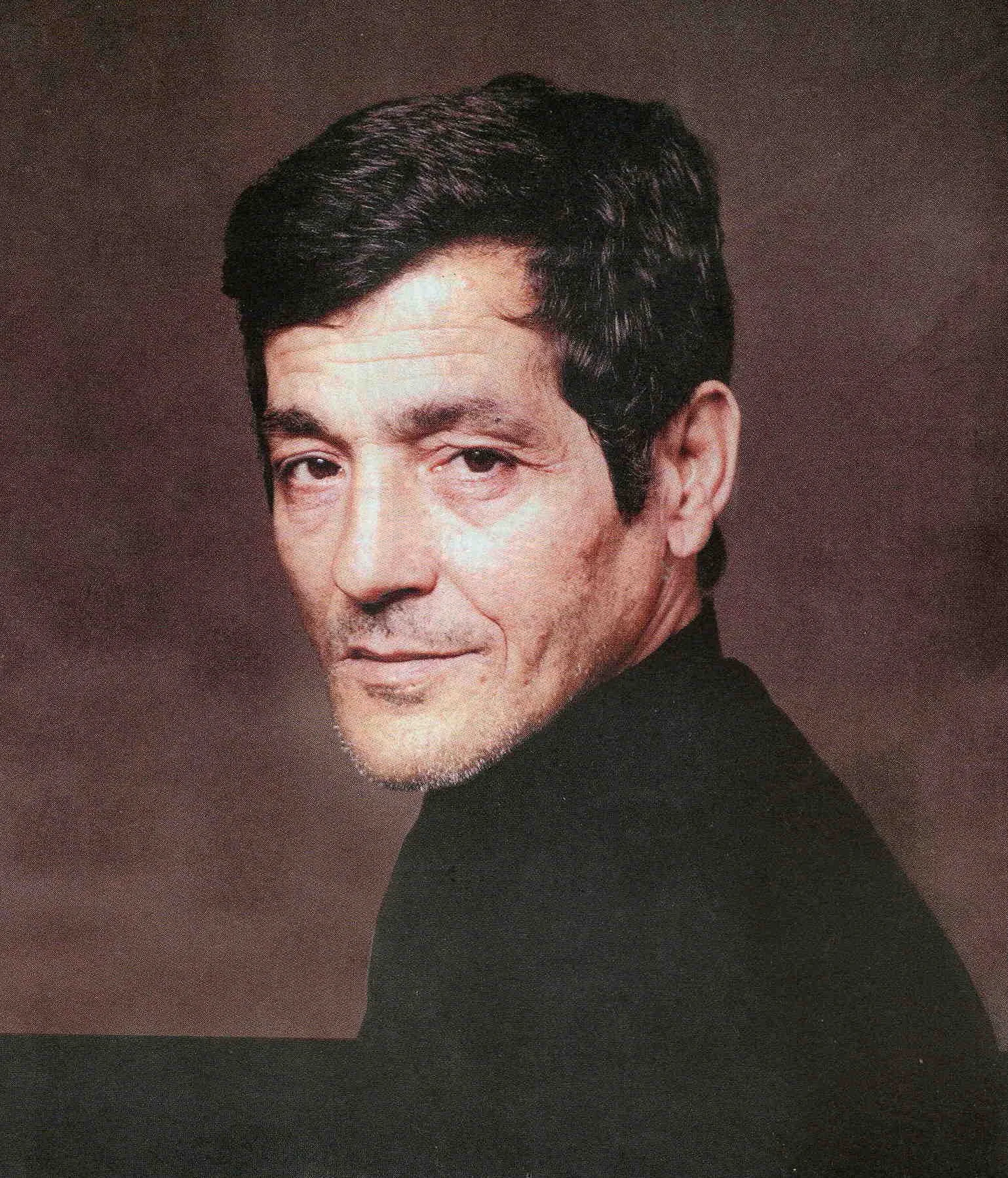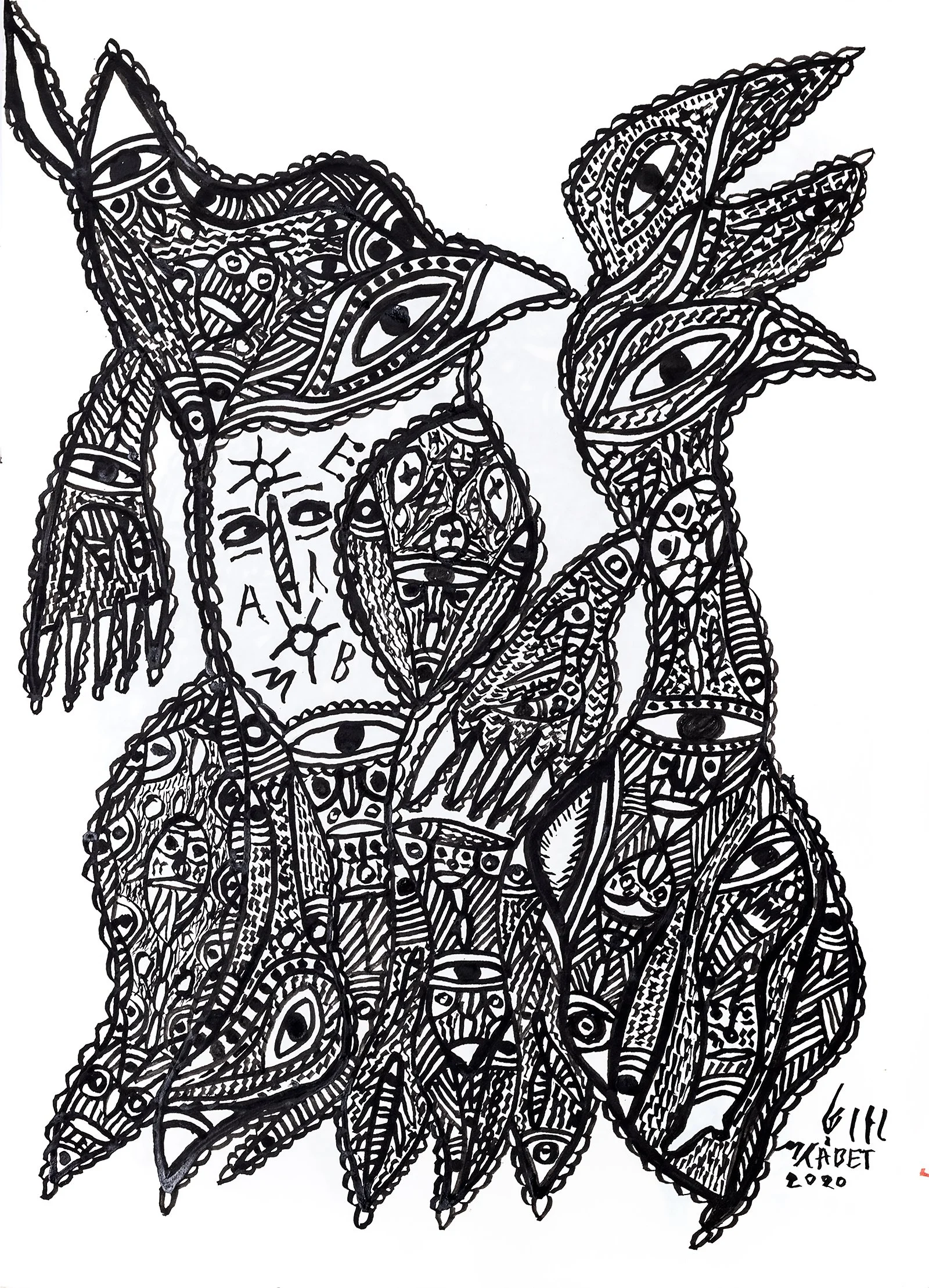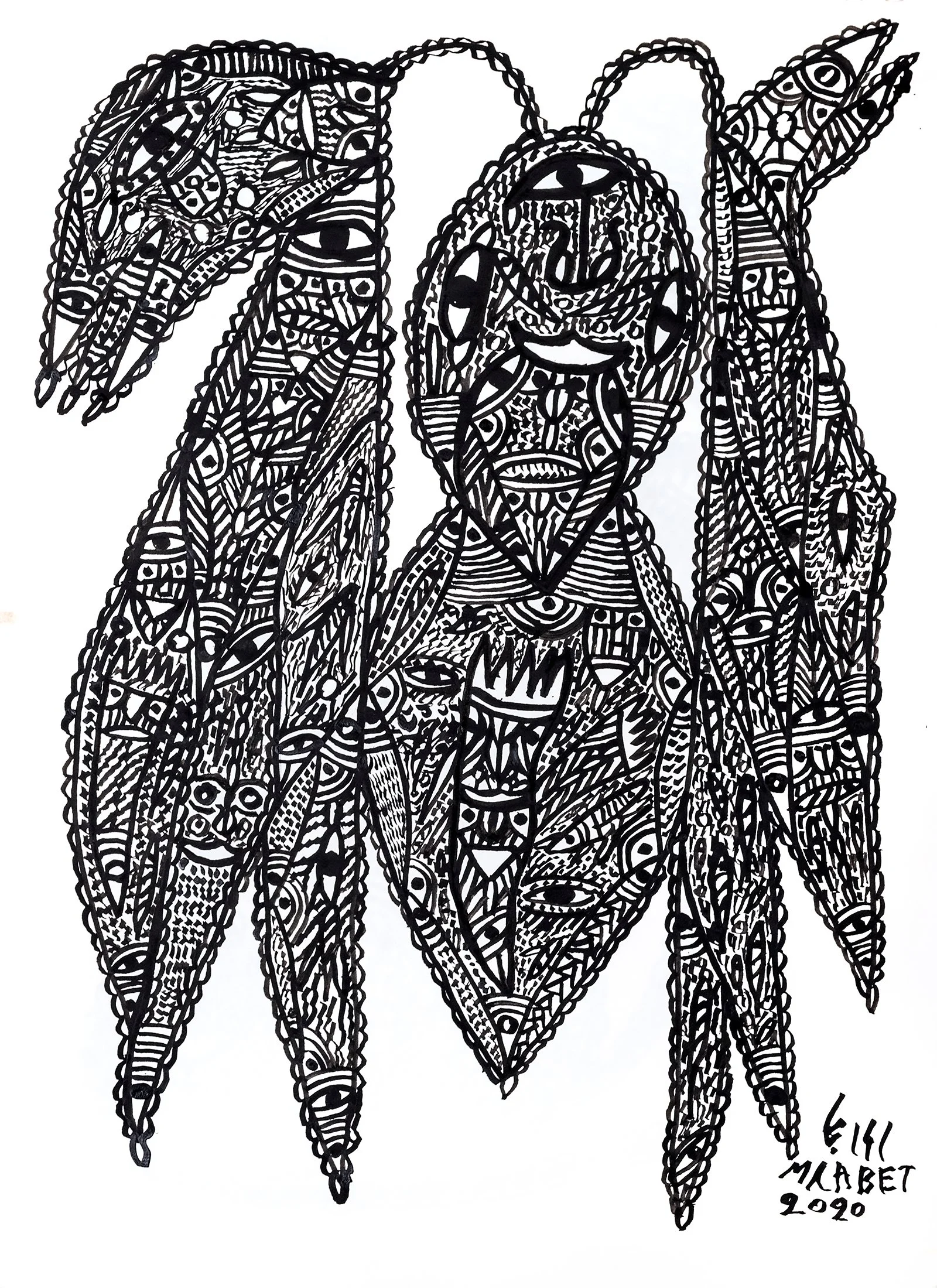Mohammed M’Rabet
El Sueno Al Fond0 De Mar
The Dream at the Bottom of the Sea
Mohammed M'rabet, 1990, Courtesy Touria Haji Temsamani

Mohammed M’rabet is the last surviving member of a group of largely self-taught Moroccan painters who were sometimes referred to as ‘the Bowles boys’ after the late American writer and composer Paul Bowles, who promoted the careers of its members. He is the least well known of these painters, not because he is less talented, but, as a storyteller, this quickly overshadowed his artistic reputation.
Born in Tangier in 1936, he was educated at a local koranic school and then moved to a public school in 1943, his parents wanting him to have a modern education. He found the transition and the school difficult, especially the punishments dealt by the staff and so, he rebelled and left both the school and his family. At the age of 9 he had a job as a cow-boy, herding cattle and selling milk at market.
In 1950, he started work as a caddy and soon become known as a handsome, streetwise hustler. Shortly after this he met a couple who later became the characters Reeves and Maria in what is referred to as his autobiography ‘Look and Move on’. In 1959 he travelled with them to New York where he was shocked by the racism he encountered. Whilst in New York, Reeves took him to visit the Guggenheim and there he ‘found’ art and decided to become a professional artist. M’rabet returned to Tangier where he met Paul Bowles and became his chauffeur. M’rabet dictated his stories and Bowles translated them, publishing a dozen books together. Through Bowles, M’rabet met many painters, and began painting again.
His first exhibition was in New York in 1970, closely followed by a second in San Francisco but, from then until 1987, he ceased exhibiting and continued to illustrate the dust covers of his novels and stories in pen and ink. In 1991, M’rabet exhibited in Brussels but did not exhibit again until 1997 when his work was first exhibited in Tangier in the bookshop of Madame Touria Haji Temsamni. Her interest revived his career and he continued to exhibit his artwork on numerous occasions after this. In 2003 the Lawrence-Arnott Art Gallery, Tangier (a representative of Bonham’s of London) purchased an extensive, unexhibited collection of M’rabet’s early paintings from 1960’s whilst commissioning several new works, realising M’rabet was both an historical figure in the development of Moroccan Modern Art and an, as yet undiscovered artist.
Join me in viewing new works of M’rabet, and get in touch should anything be of interest. M’rabet featured as part of my 2020 Monochromatic Minds exhibition. Thanks to M’rabet’s family for their help with this online exhibition.
Introduction

“The art of Mohammed M’rabet cannot be called primitive, for the draftsmanship is quite sophisticated. On one hand, the paintings derive from the classical Arab tradition, as expressed in mosaics; there is also some resemblance to the spirit-pictures drawn by Eskimo shamans. But beyond these influences, there is a fresh and original style which is uniquely M’rabet’s own.”
“Mi arte es importante para mi por que lo premero vivo de ello tanto yo mis hijos y mis nietos y ahora mismo es el único trabajo que tengo gracias a dios Cuando mi pongo una brocha en mi mano y me pongo a trabajar mi mente sale a otro mundo mágico donde me siento muy feliz aún que sea por breve momento.”
Sparse Works

Interesting Form Works
“My art is important to me because it is the first thing I make a living from for my children and grandchildren, and right now it’s the only job I have. I’m old and tired and I’m 86 years old, thank God. When I put a brush in my hand and start working, my mind goes out to another magical world, where I feel very happy, even if it is for a short time.”

Dense Works













































